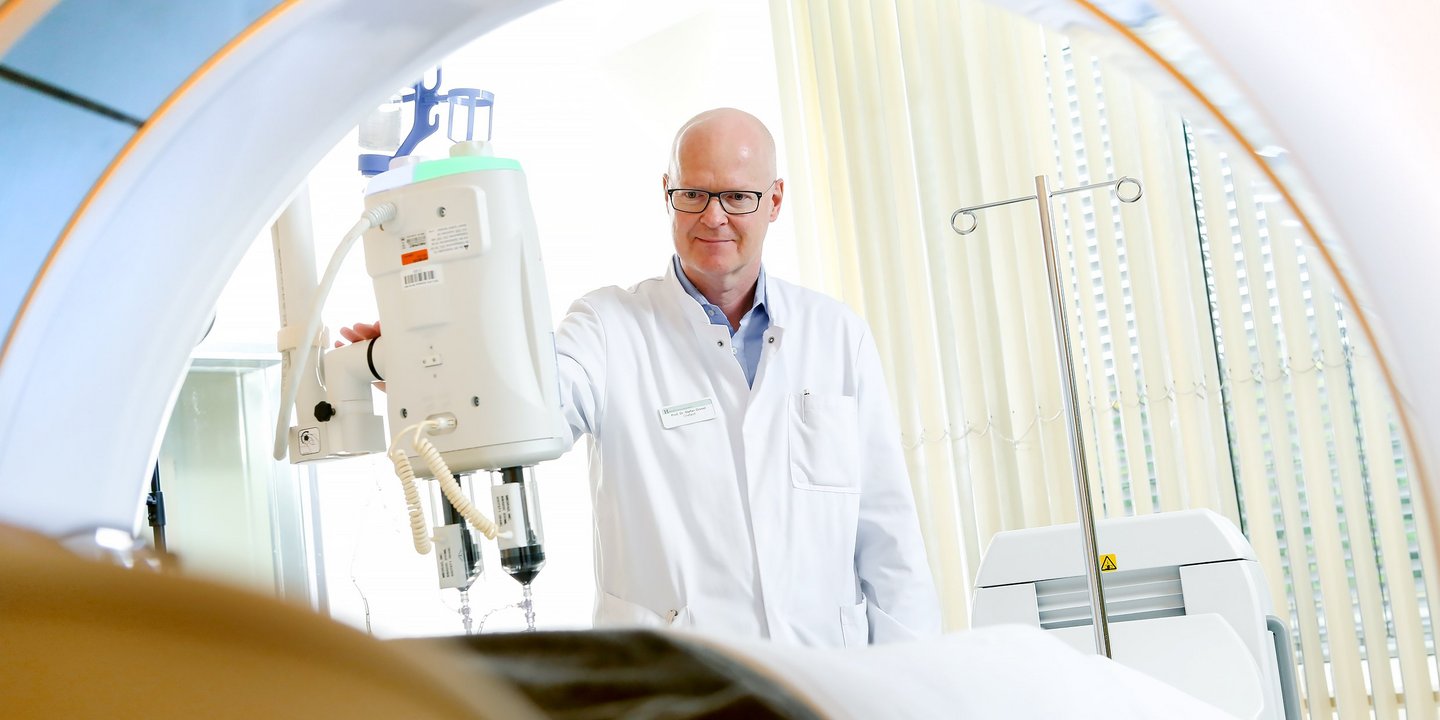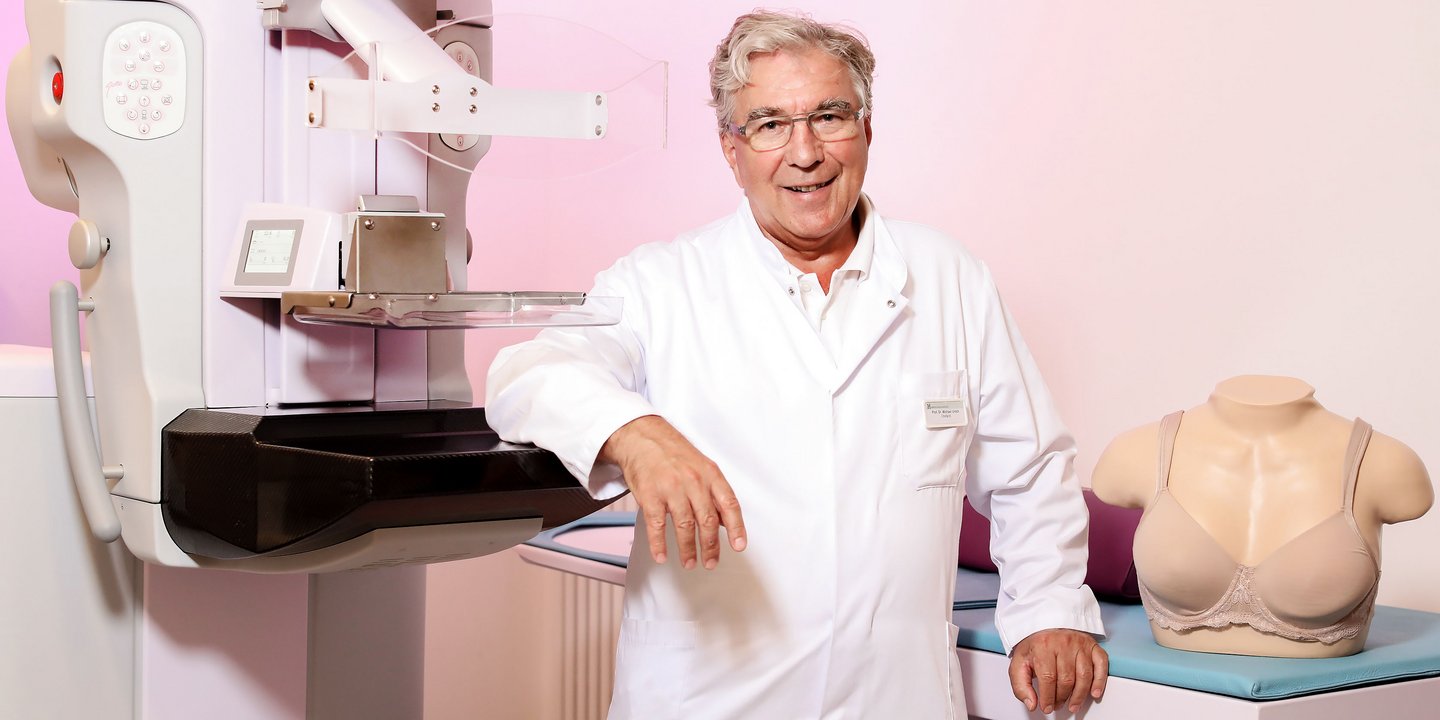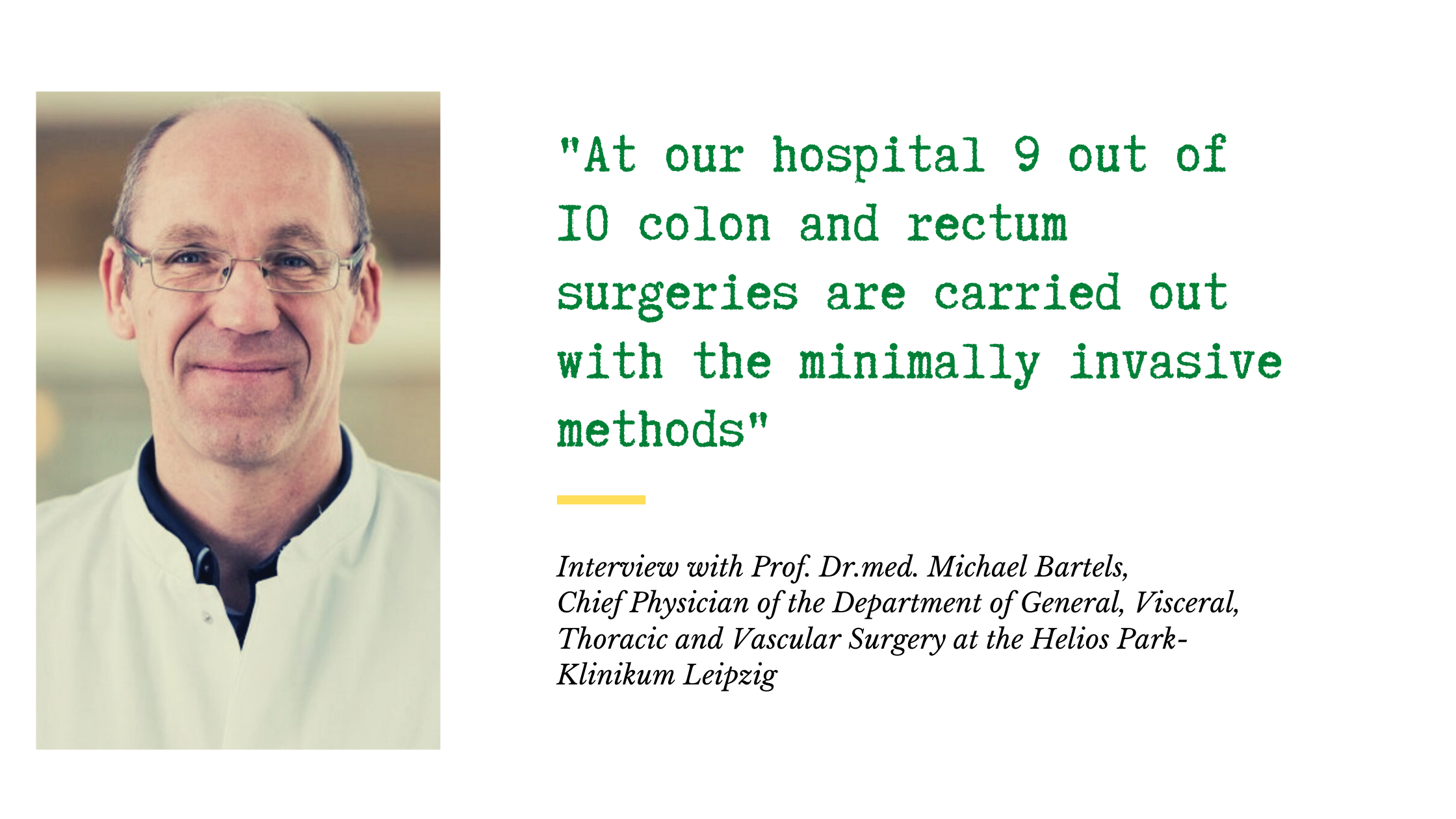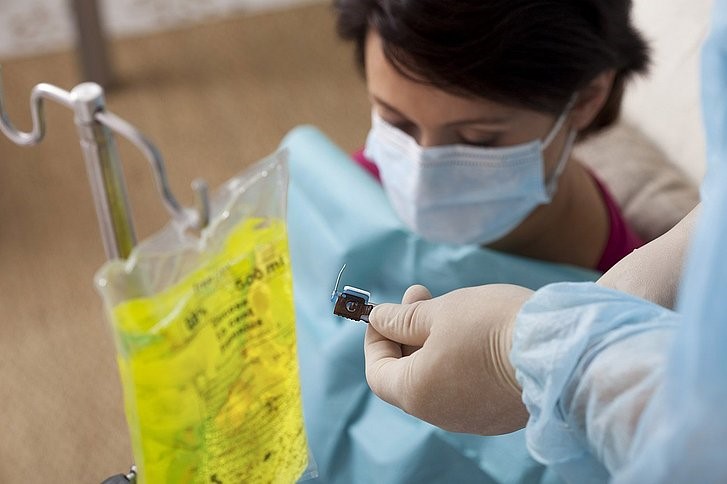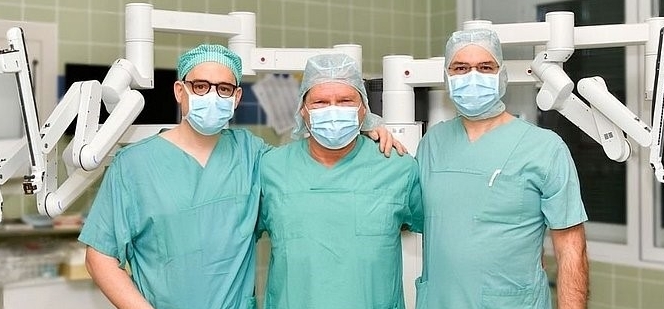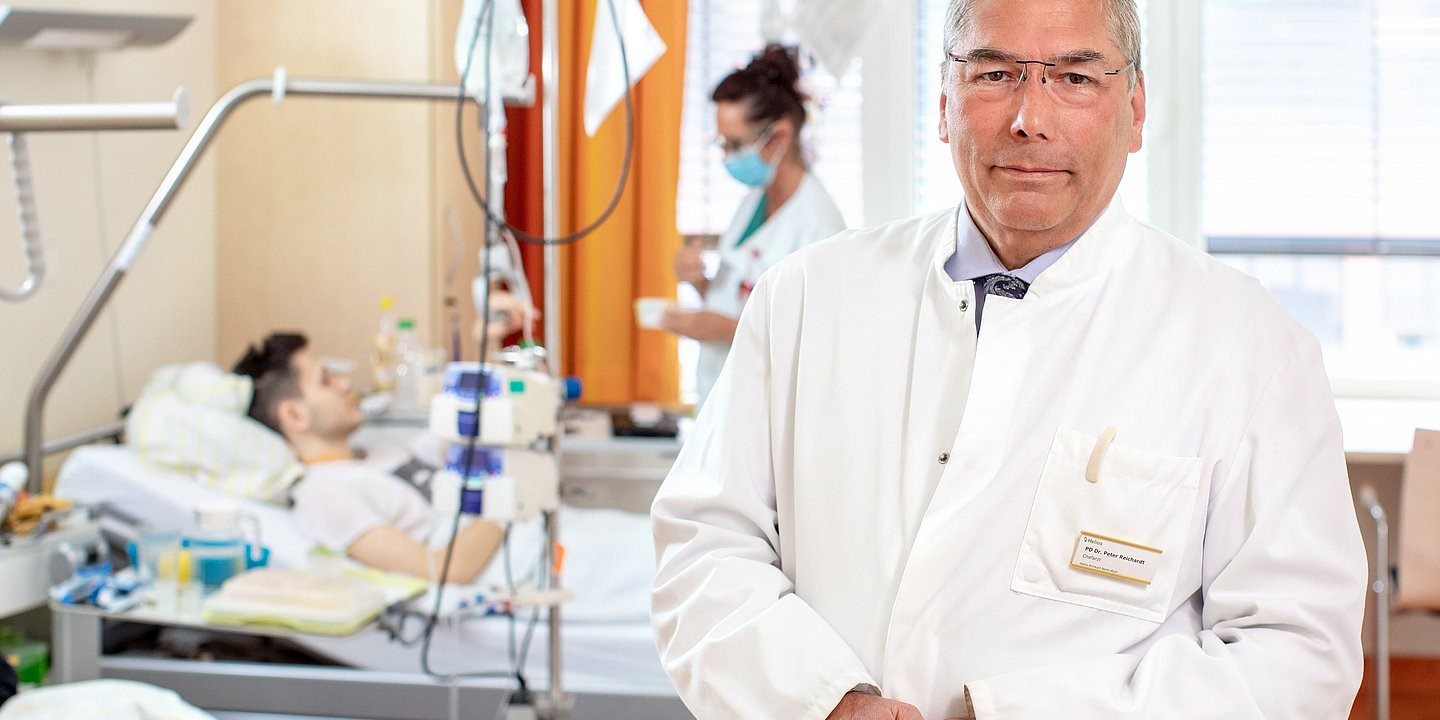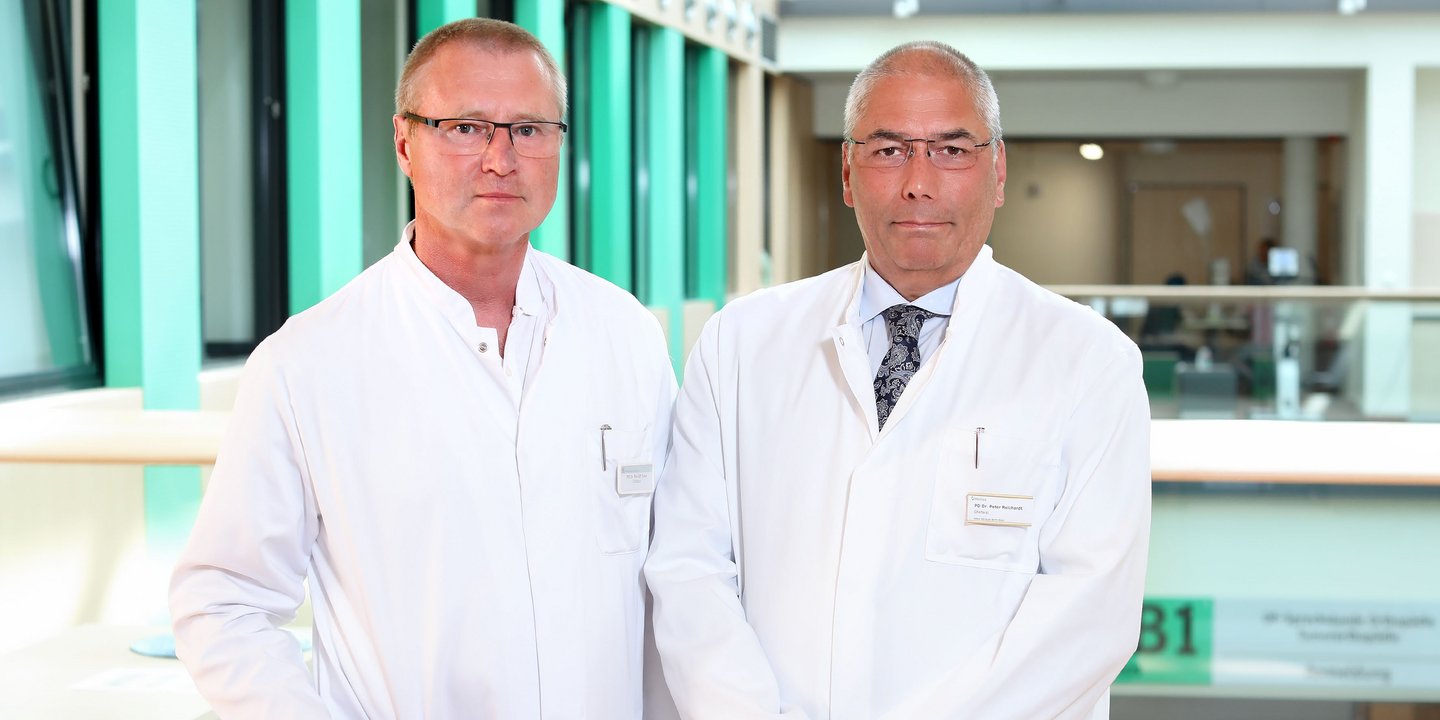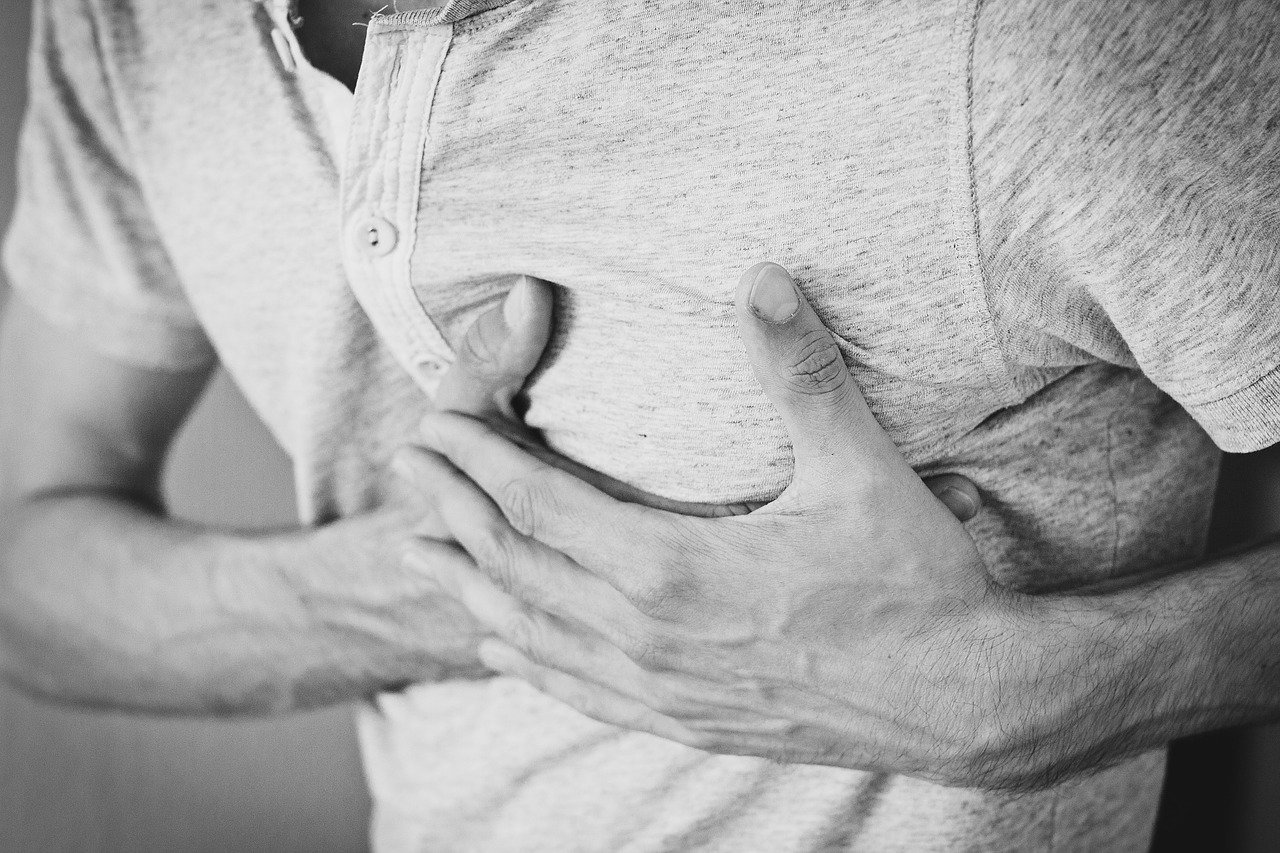
Male breast cancer — causes, diagnosis, and treatment
May breast cancer be developed in men?
Should you suddenly detect a fixed lump in the breast, immediately consult a doctor. 'Most men can notice that they have a kind of mass in the breast. But it usually takes a long time before they see a doctor. This is one of the reasons why male breast cancer is usually diagnosed in the elderly patients, often at the age of 60–70 years,' explains Dr. med. Heiko Graf, Chief Physician of the Breast Centre at the Helios Hospital Meiningen. Like in women, breast cancer usually begins in the milk ducts which are located just behind the nipples and develop equally in both sexes until puberty.
There are no standards for early detection of breast cancer in men such as mammography, which is used as a preventive measure for women. Due to the fact that the incidence rate of breast cancer in men is low, the preventive examinations are not very effective either. Moreover, it is important for men to be attentive and learn to perceive their own body.
"Most men can notice that they have a kind of mass in the breast. But it usually takes a long time before they see a doctor".
Male breast cancer: symptoms
In general, the symptoms of breast cancer in men are not different from those in women.
Men should see a doctor if they notice
• Painless dominant abnormalities or lumps in the breast that are palpable only on one side;
• Nipple retraction;
• Breast inflammation;
• nipple discharge;
• Persistent inflammation in the breast area;
• Swollen or indurated armpit lymph nodes.
If undiagnosed male breast cancer continues to progress, bone metastases can develop. They also cause other symptoms such as bone pain and weight loss. In addition, the signs that help to diagnose breast cancer include decreased performance, cough and shortness of breath, as well as a yellowish tinge of the skin or liver issues. Unusual hand swelling as a result of lymph node metastases can be also a sign of cancer.
Self-palpable lumps are usually located directly behind the nipple. In addition, the swelling of the breast, which is palpable on one side, is most often benign, and can be determined by ultrasound scanning. However, if a suspected breast tumour in men is confirmed, the diagnosis of breast cancer is clarified using a needle biopsy as in women. To do this, a tissue sample is taken under local anaesthesia and is used to determine whether the lesion is benign or malignant.
Male breast cancer: causes and risk factors
According to the German Cancer Society, there are many factors that may cause breast cancer. In addition to genetic predisposition, excessive alcohol consumption, a sedentary lifestyle or increased exposure to radiation, overweight and hormones can play an important role.
The diseases that only affect men such as undescended testicles or orchitis and epididymitis are also possible risk factors for breast cancer. Genetic abnormalities such as Klinefelter syndrome can also increase the risk of male breast cancer.
Hormones
The sex hormone oestrogen is the cause of male breast cancer in more than 90% of cases. While women carry male hormones, male hormonal balance also includes female hormones such as oestrogen and progesterone. They facilitate tumour growth in the fatty tissue around the milk ducts below the nipple, which develop equally in both sexes before puberty. In spite of the fact that the milk duct growth in men ends at puberty, the tumour may develop later at the end of puberty. It is often, but not always, observed that the elevated oestrogen level in men is associated with liver disease or severe obesity. The administration of female hormones, which is required, for example, in cases of gender reassignment, can also lead to cancer.
Obesity
While breast cancer can be diagnosed in slim and athletic people, men with a body mass index (BMI) ≥30 (BMI ≤25 is considered normal) have an 80% higher risk of developing cancer. One of the reasons for this is hormonal processes in the fatty tissue, which is an optimal nutrient medium for their action, facilitating the development of breast cancer.
Gene mutations
The men with inherited gene mutations such as BRCA2 (BReast CAncer) have an increased risk of breast cancer. Genetic abnormalities such as Klinefelter syndrome can also increase the risk of male breast cancer. However, be careful as only 3–7 % of men with breast cancer have the Klinefelter syndrome.
Male breast cancer: diagnosis
Compared to women, men are diagnosed with breast cancer at a later stage and at an older age. One of the reasons of this is that there are no breast cancer screening programmes for men. On the other hand, men, when they have problems in the chest area, hardly think about the possibility of breast cancer. It often leads to loss of precious time that is required for a successful course of therapy and a higher chance of recovery. This is the reason why a 10-year survival rate in male breast cancer patients is 65%, which is significantly lower than in women (82%).
In general, with adequate therapy, a male patient with breast cancer has exactly the same chances of survival as a female patient. Only if the tumour has existed for so long that it has already grown through the skin, or if the lymph nodes in the armpit are already affected, the prognosis for a male patient is worse, but not fatal.
Male breast cancer: treatment options
The treatment of breast cancer in men is generally the same as in women. In most cases it is a combination of different options such as radiation therapy, chemotherapy, antibody or hormone therapy that is aimed to destroy cancer cells in the body. While women undergo breast-conserving surgeries, 'in the Breast Centre like ours, the tumour is surgically removed before local irradiation of this area is performed,' explains Dr. Graf, Head of Suhl/Meiningen Breast Centre, South Thuringia, who also works as a medical specialist there.
Radiation therapy
Radiation therapy for breast cancer is considered as localized therapy, which is conducted for three to seven weeks in both men and women. The field of chest wall irradiation is accurately estimated in advance. It is followed by daily irradiation for only a few minutes. The purpose is to prevent the return of the disease in this area, a so-called local recurrence.
Systemic therapy
Radiation is usually followed by a so-called systemic therapy during which the whole body is treated. The purpose is to destroy any complexes of tumour cells that may have penetrated into the body to prevent them to transform into metastases. In most cases, the systemic therapy includes hormone therapy in the tablet form.
Chemotherapy
Depending on the tumour characteristics and aggressiveness, outpatient chemotherapy may also be required to prevent recurrence.
Neoadjuvant therapy
If it has already been established at initial diagnosis that chemotherapy is inevitable, the standard procedure: first surgery and then chemotherapy, is reversed. Therefore, the efficacy of the chosen drug can be verified by close monitoring and changed, if necessary, and the tumour size can reduce even before surgery. This will not allow avoiding a surgery, but this procedure offers a good chance of recovery.
Endocrine therapy
Currently, there are no drugs developed specifically for men. Typically, men with breast cancer are prescribed the same drugs as women. Hormone therapy usually includes therapy with Tamoxifen, which is the most well-known efficacious drug. The usual therapy duration is 5 to 10 years. For more information, see the Male Breast Cancer Network.
Male breast cancer: follow-up and rehabilitation
Regardless of a therapy regimen chosen to treat male breast cancer, follow-up remains an important issue. Since after the successful therapy completion, a patient starts the follow-up and rehabilitation.
These stages are intended to enable a breast cancer patient to return to normal life: gain strength, return to normal life and learn additional information that will be useful for life after breast cancer and with this disease. This includes among others nutrition advice or information on sports and physical therapy. In addition, psychological support at these stages allows overcoming the disease and facilitates a possible return to professional life.
During the rehabilitation, patients receive treatment for various complaints and functional limitations such as imbalance, joint problems, lack of strength and insufficient endurance due to loss of muscle mass. The rehabilitation facilities often address comorbid health issues and offer support services.
Do you need more information about Helios Hospitals or want to schedule your treatment?

